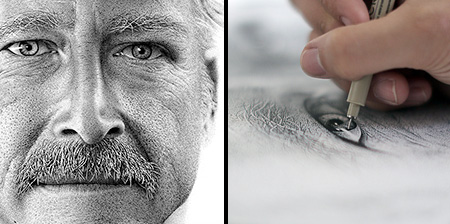
Realistic portraits drawn by Florida based artist Miguel Endara consist of millions of dots.
Each ink dot drawing takes hundreds of hours to complete and requires extreme level of concentration, attention to detail, and patience.
Talented artist used his father as a model for the “Hero” drawing.
Hero (3.2 Million Dots – 210 Hours)
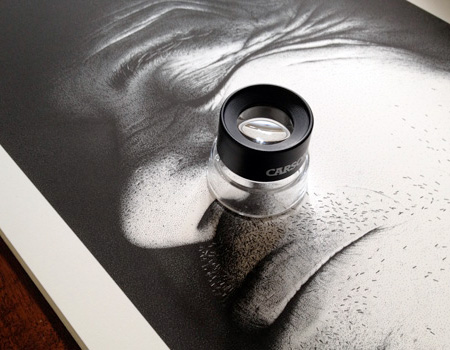
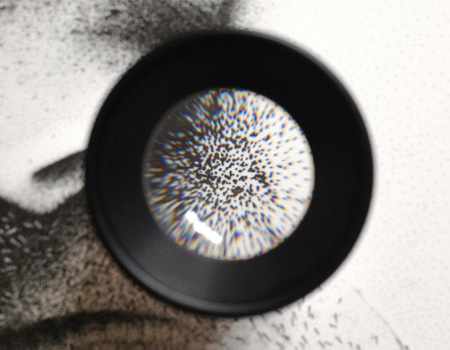
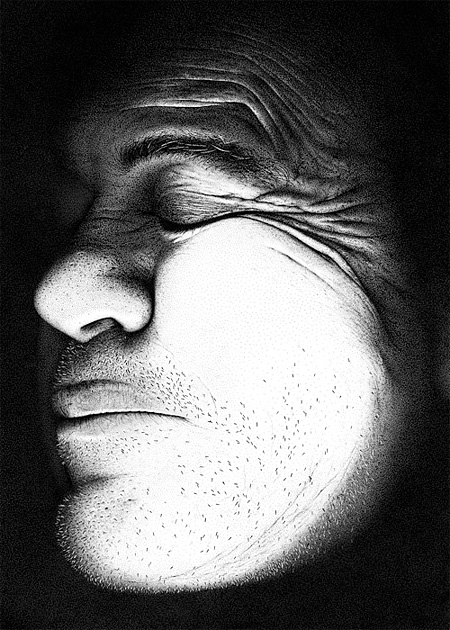
Benjaman Kyle (2.1 Million Dots – 138 Hours)
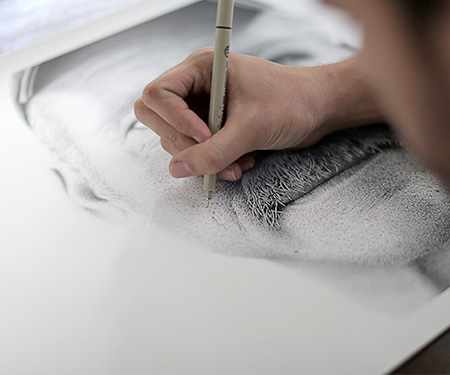
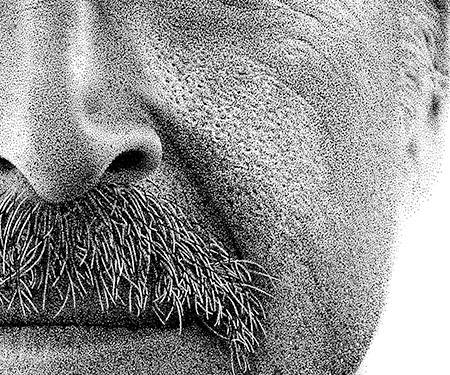
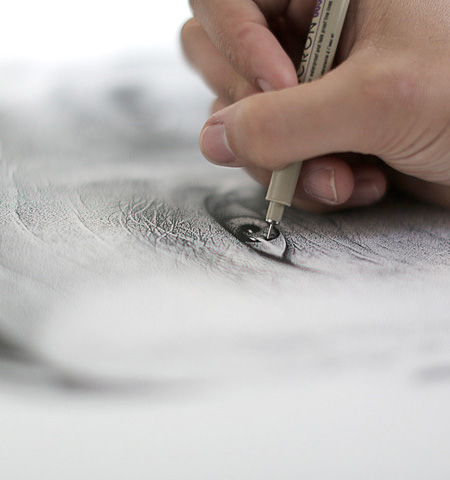
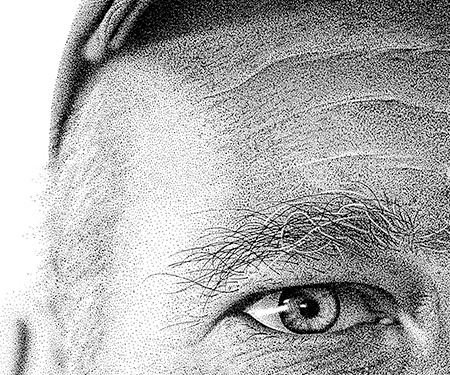
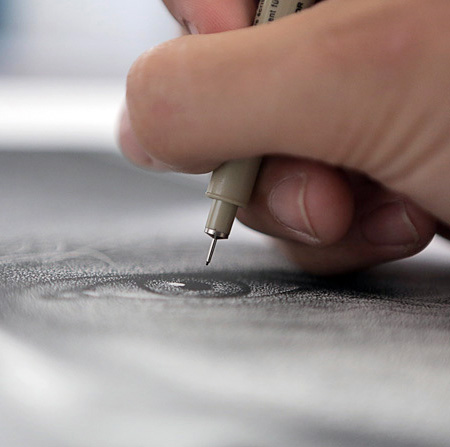
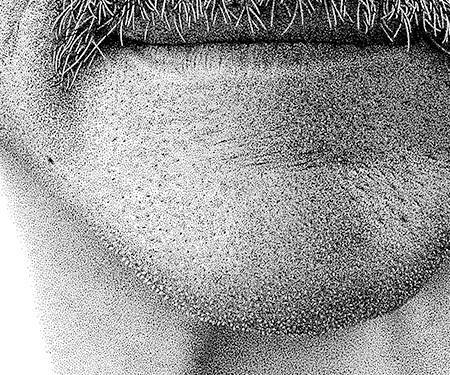
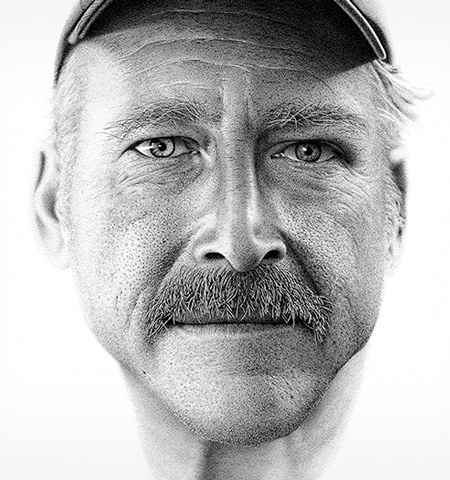
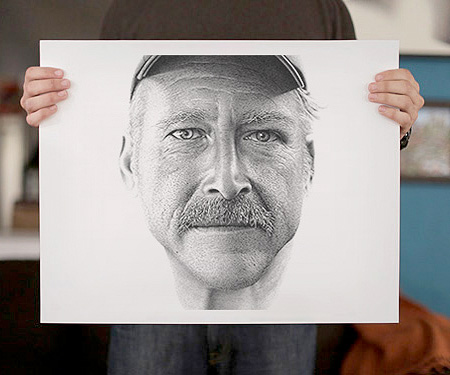
Also check out: Photorealistic Drawing and Spiral Drawings

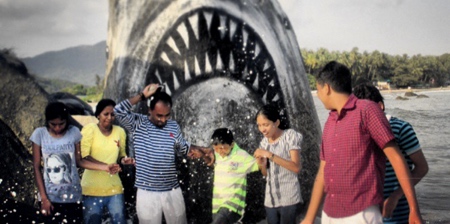
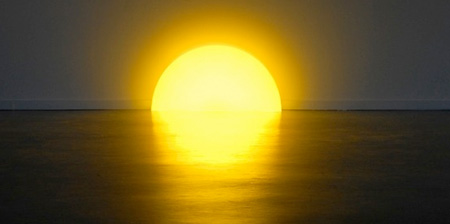

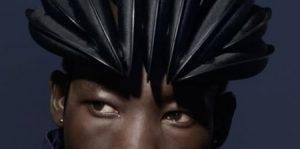
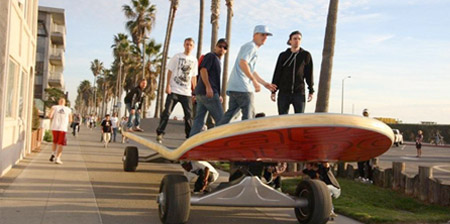
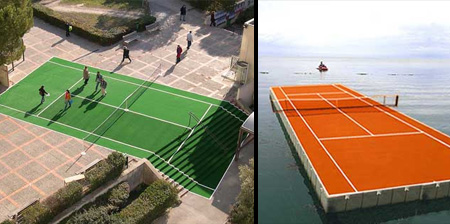
kadal
i remember doing dot drawing at my college and must do 5 pages each week for a month, for the moment i start it was fun and then become so much tiring. and i’d never reach this kind of level as Miguel Endara’s. it’s very well done and this is makes me smile.
Feb 27th, 2013
Maseki
How long did this take?
Feb 28th, 2013
Mimi
Awesome picture
Feb 28th, 2013
Gert
I still have some of the drawings I did from that class Kadal. None of them are even close to as good as this.
Feb 28th, 2013
Douglas
Which took longer – making the drawing or counting the dots? Pretty amazing work.
Feb 28th, 2013
kubawojewoda
another human-copier. what’s the POINT of such art? nice photos, but they could also be printed in a normal way…
Feb 28th, 2013
Joe
@ kubawojeweda
There is no “point” of art. Art is as subjective as anything can be. There is music that makes no sense to me, but I know that pleasing to the ears and pleasing to the intellect are not synonymous feelings. I don’t particularly enjoy watching ballet, but I respect it as much as any art form as the dedication and physical perfection required is impressive to me.
The art that consists of shock value/irony/creativity in order to illicit a mental response is very similar to this. Whereas with photorealism the artist himself is judged based on the skill level attained, art that is designed to ellicit a novel emotional or intellectual response is judged based on the power and originality of the idea being expressed.
This obviously causes quite a bit of stir as photorealism is much easier to objectively judge as “good” or “bad” since there is a standard against which it can be compared. Abstract, avant-garde art on the other hand is largely up in the air and thus no definitive statement can be made (and it usually sparks an endless debate about postmodernism).
Both represent extremes (one of pure objective value, and the other of pure subjective value) and so most people see them both as meaningless. But, like I said, while the end product is in both cases intrinsically meaningless, as a monument to the creative process, there is some value to find. In the case of photorealism, that value is more readily apparent.
2c.
Feb 28th, 2013
Paula
Wow the artists that do this mst be really patient it looks so difficult but incredible talent is needed very admirable. Incredible they look like photos.
Mar 1st, 2013
kelly Tozarin
Wow! I loved it!
Mar 2nd, 2013
Zaher Sahyoun
Amazing talent that require a lotttttttt’s of passion
Mar 3rd, 2013
kubawojewoda
man, i know, that there is no point needed in art. it has to be beautiful or creative or anything, but be just art somehow. but skill doesnt need to be just shown – it has to be used with creativity. here we dont see art, but a handmade copy of the photografph. if this picture was captured by the artist himself, then maybe there is some sense in it, but i’m worried, that this artist is just a craftsman with no artistic sense. why to copy something to look EXACTLY the same as the original print? i think the answer is needed
Mar 5th, 2013
kubawojewoda
i wouldnt be this sceptic if the author doesnt use any photograph
Mar 5th, 2013
Joe
@ kubawojewoda
You could say the same thing about an artist painting a landscape, no? Any form of replication requires little to no creativity. I would argue that any portraitist or landscape painter is no different from this artist. The great portrait painters of the renaissance would have their subject sit in front of them, rather than use a photo as reference, but I see nothing intrinsically different with that process. I don’t think anyone would dispute that any of those portraits are works of art, despite the fact that they were essentially produced in the same manner. Copying a person’s image exactly is the purpose of a portrait. Whether or not there is an intermediary process seems irrelevant to the final product. The only difference with referencing the photograph of a person’s likeness is that the person needn’t sit for hours posing for the artist, which has more to do with the them than the artist.
I concede that portraits initially were mainly done for lack of photography and have been largely phased out. However, now that there are cameras widely available, the portrait seems to have greater personal meaning (to the artist and the subject). It is far easier to push a button and replicate someone’s likeness in a fraction of a second, than spend hours dedicating yourself to the faithful reproduction of every aspect of it by hand. Viewers’ opinions notwithstanding, the subject doubtless finds greater meaning in the portrait than the photograph. Barring everything else, I would argue that by fostering those feelings in another person, the photorealistic portrait still counts as art in the conventional sense. (Whether or not art can even be distinguished from anything else in the world in an absolute sense is another discussion entirely.) By extension, the same idea can be applied to any still-life or landscape painting that could easily have been replicated with a camera. (I gather you don’t view photographic art very highly.)
This isn’t to say that your point is invalid. I just think it attempts to make black and white two different shades of grey. The differences have yet to be argued in a convincing way to me as anything less than arbitrary. For me, the line between form and function is so wide and so blurry that it is essentially nonexistent.
Mar 6th, 2013
Deanna
I started my artistic career as a realist. I find it sad when a person can’t see the level of skill and natural talent it takes to accomplish a piece of work like this. A couple of years ago I started moving away from my realistic portraits to a style that is more surrealistic in nature. Which does pose a new challenge to play with subject matter and meaning within my work.
The skill of creating a realistic portrait is one of the most difficult things for most artists to master. And to me, if you have mastered a photorealistic style it opens up your ability to create more conceptual pieces.
The strongest artists are adept in both skill and concept.
I admire the amount of skill and talent that went into creating these portraits. Beautifully done.
Mar 22nd, 2013